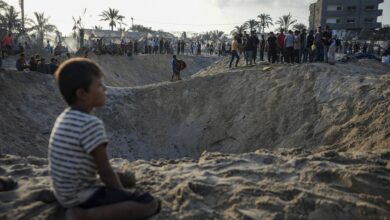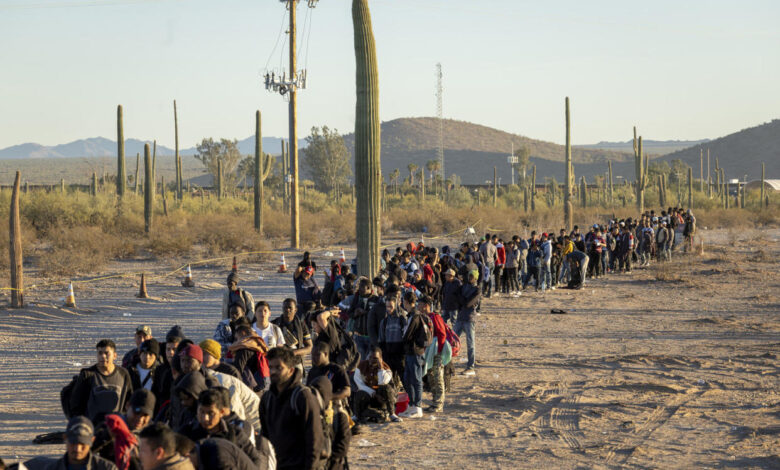
US Border Arizona Migrant Crossings A Deep Dive
US border Arizona migrant crossings are a complex issue with deep historical roots and significant contemporary implications. This exploration delves into the historical context, the current state of crossings, their impact on Arizona communities, policy considerations, humanitarian needs, cross-border cooperation, illustrative examples, and visual representations of data. We’ll examine the motivations behind these journeys, the challenges faced, and the potential solutions.
Understanding the various facets of this issue requires examining the interplay of historical events, current trends, and the human element. From the legal frameworks to the economic and social impacts, this analysis provides a comprehensive overview of the intricate dynamics at play.
Historical Context of Border Crossings
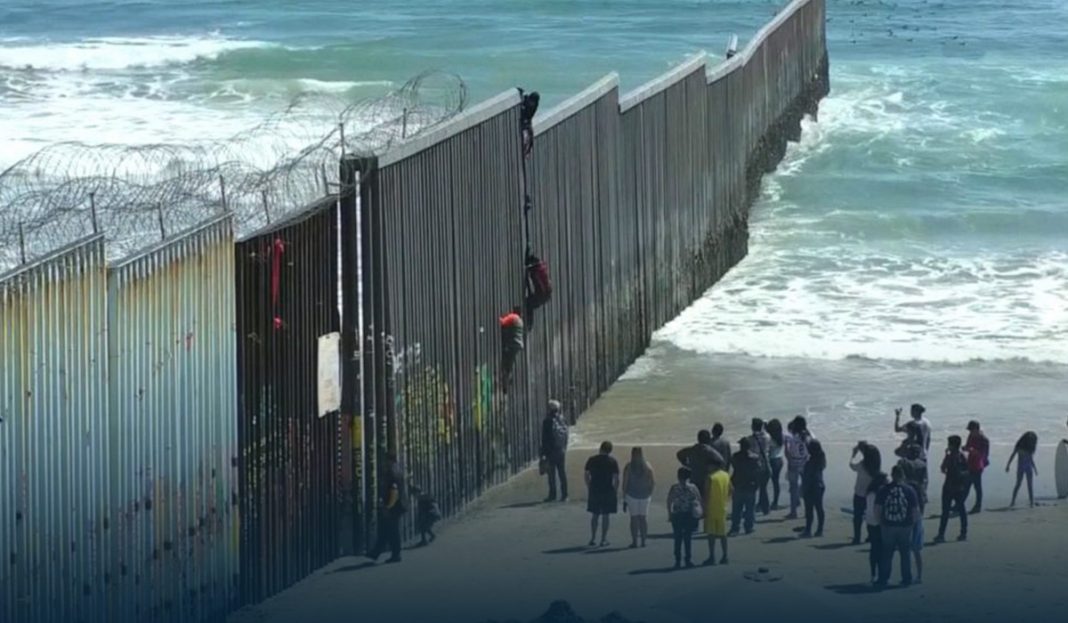
The Arizona border, a crucial point of entry for migrants throughout history, has witnessed significant shifts in migration patterns, legal frameworks, and societal responses. Understanding this historical context is essential for comprehending the complexities of the current situation and developing effective policies. This exploration will delve into the evolving relationship between the border and migration, tracing the historical journey of crossings.The history of border crossings in Arizona is deeply intertwined with the region’s socio-economic development and shifting geopolitical landscapes.
Early migration patterns were largely driven by economic opportunities and social factors. Later, the development of formal immigration policies and legal frameworks significantly impacted the nature and scale of crossings, creating a dynamic interaction between human mobility and political structures.
Early Migration Patterns and Influences
The earliest crossings were largely undocumented and driven by factors like economic hardship, political instability, and the pursuit of better lives. Early settlers and laborers crossed the border for agricultural and construction work, shaping the region’s development. These initial crossings were often characterized by informal agreements and a lack of formalized procedures. Social and economic factors, such as the availability of jobs and the allure of higher wages, were crucial in shaping these initial migration flows.
Legal and Policy Frameworks
The evolution of immigration laws and policies has played a crucial role in regulating and shaping migrant crossings at the Arizona border. Early immigration laws were often influenced by national economic priorities and social attitudes. As the United States grew, so did the complexity of its immigration policies, leading to fluctuating levels of border enforcement and legal avenues for entry.
The passage of the Immigration Act of 1924, for instance, established quotas based on national origin, impacting the flow of migrants from various countries.
The ongoing migrant crossings at the US border in Arizona are a complex issue, with many stories of hardship and displacement. It’s easy to get caught up in the statistics and policy debates, but it’s crucial to remember the human element. The recent news about the tragic loss of life, and the immense grief experienced by those affected, especially highlighted in articles like “grief is for people sloane crosley” grief is for people sloane crosley , underscores the profound impact these crossings have on individuals and families.
Ultimately, the human cost of these crossings remains a central concern, and effective solutions need to acknowledge this.
Timeline of Significant Legislation and Court Cases
- 1924 Immigration Act: This legislation established national quotas for immigration, impacting the flow of migrants from various countries and creating complex procedures for border crossings. This act had a significant impact on the numbers and demographics of immigrants entering the U.S. through Arizona.
- 1986 Immigration Reform and Control Act: This act aimed to address undocumented immigration by providing a path to legal status for some immigrants while increasing border enforcement. The act’s impact on border crossings was mixed, with some success in reducing undocumented immigration, but also leading to the development of new strategies for border evasion.
- 2006 Secure Fence Act: This legislation authorized the construction of physical barriers along the U.S.-Mexico border. The debate surrounding this act centered on its effectiveness in deterring illegal crossings versus its impact on the environment and local communities. The act’s impact on the flow of crossings is still a subject of discussion and study.
- 2014 Arizona SB 1070: This law increased state-level involvement in immigration enforcement. The law faced legal challenges and significant public debate regarding its constitutionality and impact on civil rights. It illustrated the ongoing tension between state and federal authority in managing border crossings.
Social and Economic Factors Shaping Migration Flows
Factors such as economic disparities, political instability, and social unrest in the countries of origin significantly influence migration patterns. For example, periods of drought or economic downturn in Mexico often lead to increased migration to the United States in search of work and better opportunities. These social and economic pressures create a push-pull effect on migration flows.
Major Events and Shifts in Migration Patterns
- The Great Depression: This period led to significant shifts in migration patterns as people sought economic opportunities in the United States. The economic hardship in Mexico during the 1930s, for example, pushed many to seek work in the U.S. through Arizona.
- World War II: The war dramatically impacted migration flows, creating both shortages and opportunities in the labor market. This impacted the Arizona border as well, with changes in the types of workers entering the country.
- The Cold War: The political climate of the Cold War created a complex set of factors that influenced migration flows. The political turmoil in some regions influenced migration to the U.S. through Arizona, including refugees and asylum seekers.
Current State of Migrant Crossings
The Arizona border continues to be a focal point for migrant crossings, a complex issue with significant human and societal implications. Understanding the current trends, challenges, and security measures is crucial for informed discussion and policy development. Recent shifts in patterns and demographics necessitate careful analysis of the situation.The dynamics of migrant crossings along the Arizona border are influenced by various interconnected factors, including economic conditions in origin countries, political instability, and the perception of opportunities in the United States.
This makes a comprehensive understanding of the current situation paramount.
Current Trends in Migrant Crossings
The volume of migrant crossings along the Arizona border exhibits fluctuations, influenced by seasonal factors, economic conditions, and policies. While precise figures are often subject to reporting delays and varying methodologies, the overall trend shows a persistent flow of individuals seeking entry into the United States.
Demographic Composition of Migrants
Migrant demographics along the Arizona border are diverse. While specific data on nationality and age distribution can be challenging to obtain, reports suggest a mix of individuals from various countries, with families and unaccompanied minors representing significant portions.
Common Routes and Entry Points
Migrants often utilize established routes and entry points along the Arizona border, navigating terrain and obstacles. These routes are frequently influenced by geographic features, security deployments, and prior migrant experiences. The specific locations are sometimes concealed, necessitating adaptive strategies for border enforcement.
Challenges Faced by Migrants
Migrants encounter numerous obstacles during their journey to the border and subsequent attempts to cross. These include the physical challenges of terrain, the risk of dehydration and exhaustion, and the danger of encountering harsh weather conditions. Furthermore, there is the potential for encounters with criminal elements, highlighting the urgent need for aid and support.
Security Measures Implemented by Authorities
The authorities employ various security measures to deter and monitor crossings. These measures include physical barriers, technological surveillance, and personnel deployments. These efforts are designed to maintain security and address the challenges presented by increased crossings.
Comparison with Previous Years
Comparing the current situation with previous years reveals evolving patterns. While exact figures vary based on reporting methods, trends suggest fluctuations in the number of crossings based on economic situations and political climate in the migrants’ origin countries. The methods and resources employed by border authorities may also shift in response to these fluctuations.
Impact on Arizona Communities
Arizona’s border communities are directly impacted by the volume of migrant crossings. The influx of individuals and families seeking refuge or better opportunities presents a complex web of challenges and opportunities for local populations, necessitating careful consideration of the economic, social, and political ramifications. This impact transcends simple numbers; it fundamentally alters the fabric of these communities.The economic ripple effects are multifaceted.
Increased demand for essential services like healthcare and education places strain on already existing resources. Businesses, particularly those in the service sector, may experience both increased clientele and competition. Potential for job creation through migrant-serving enterprises exists but is often overshadowed by immediate economic challenges. Some businesses report an increase in demand, while others see a decrease in profit due to the competition for resources.
Economic Effects
The influx of migrants can impact local businesses in various ways. Some businesses report increased customer volume, leading to greater revenue, while others experience decreased profit margins due to increased competition. The demand for goods and services often rises, potentially boosting the local economy. However, this increase is often not evenly distributed, and some businesses might struggle to adapt.
Social Impacts
The social impact of migrant crossings on Arizona communities is significant and complex. Housing availability can be a critical factor. Increased demand for housing can drive up prices, potentially impacting local residents who are already struggling with high costs. The availability of public services like schools, hospitals, and social welfare programs also comes under pressure as populations increase.
Infrastructure Impacts
Infrastructure, particularly transportation and utilities, can face strain. The increased number of people crossing borders necessitates additional resources for road maintenance, public transportation, and utilities to accommodate the increased demand. Overburdened infrastructure can lead to congestion and potentially compromise safety and quality of life.
Stakeholder Perspectives
Stakeholder perspectives on migrant crossings vary widely. Local businesses, concerned about competition and resource availability, may have different opinions compared to humanitarian organizations focused on providing aid and support to migrants. Local residents may express concerns about the strain on public resources and infrastructure, while advocates for migrant rights emphasize the need for compassion and support.
Potential for Conflict and Cooperation
Potential for conflict between migrants and local residents can arise from misunderstandings, competition for resources, or differences in cultural values. However, opportunities for cooperation also exist. Community-based organizations often play a crucial role in fostering understanding and mutual support.
Community Responses
Arizona communities are responding to the influx of migrants in diverse ways. Some communities have established support networks, offering assistance to migrants in areas such as housing, language support, and employment. Others focus on addressing the needs of local residents who may be affected by the influx of migrants. Efforts to find solutions and address concerns are underway.
Policy and Legal Considerations
Navigating the Arizona borderlands involves a complex web of immigration policies and legal precedents. These frameworks, often contested and evolving, shape the experiences of migrants and significantly impact Arizona communities. Understanding the current landscape of these policies is crucial for comprehending the challenges and potential solutions surrounding border crossings.The legal framework governing border crossings in the United States is multifaceted and constantly being re-evaluated.
Existing laws often clash with humanitarian concerns and the realities of the human experience, leading to complex legal battles and political debates. Furthermore, the interpretation and application of these laws vary across different administrations, contributing to the ever-shifting nature of the border crossing experience.
Existing Immigration Policies and Laws
U.S. immigration laws are designed to regulate the entry and stay of non-citizens. These laws encompass various categories, including asylum seekers, those seeking refuge, and individuals seeking entry for work or family reunification. Specific statutes dictate the procedures and criteria for each category, often resulting in protracted legal battles and varying levels of access to justice. Arizona, as a state bordering Mexico, plays a significant role in the implementation of these federal laws, albeit within the framework of federal guidelines.
Legal Processes for Asylum Seekers
Asylum seekers must demonstrate a well-founded fear of persecution in their home country to qualify for asylum. This process involves presenting evidence, undergoing interviews, and navigating complex bureaucratic procedures. The legal standards for determining “well-founded fear” are often subject to interpretation, leading to inconsistencies in outcomes. The legal pathway for asylum is frequently protracted and fraught with delays, which can create significant hardship for individuals and families.
Comparison of Approaches by Different Administrations
Different administrations have adopted distinct approaches to immigration policy. Some have emphasized stricter enforcement, while others have prioritized humanitarian concerns and the protection of vulnerable populations. These differing approaches have tangible effects on the number of individuals seeking refuge, the legal pathways they take, and the resources available to support them. For instance, one administration may prioritize border security through increased funding and manpower, whereas another might prioritize the protection of children and families.
Potential Implications of Policy Changes
Policy changes can have substantial implications for border crossings, including shifts in the number of crossings, the composition of migrants, and the strain on resources. For example, stricter enforcement policies might deter asylum seekers, leading to increased numbers of irregular border crossings and a greater humanitarian crisis. Conversely, more lenient policies might encourage greater migration, potentially leading to increased demands on social services and infrastructure.
Key Legal Precedents
| Legal Precedent | Relevance to Current Border Crossings |
|---|---|
| Plyler v. Doe (1982) | This case established that states cannot deny public education to undocumented children. This precedent has implications for providing resources and support to migrant children in Arizona. |
| Zadvydas v. Davis (2001) | This case addressed the detention of immigrants awaiting deportation. This precedent has implications for the detention and processing of migrants crossing the border, highlighting the balance between national security and humanitarian concerns. |
| Matter of A.B. (2015) | This case involved the processing of unaccompanied minors. It emphasized the importance of providing appropriate care and legal representation for vulnerable populations, such as unaccompanied minors. |
These legal precedents illustrate the complexities of the legal framework surrounding border crossings. Understanding these precedents is crucial to evaluating the implications of policy changes and the overall impact on migrants and communities.
Humanitarian Concerns and Needs: Us Border Arizona Migrant Crossings
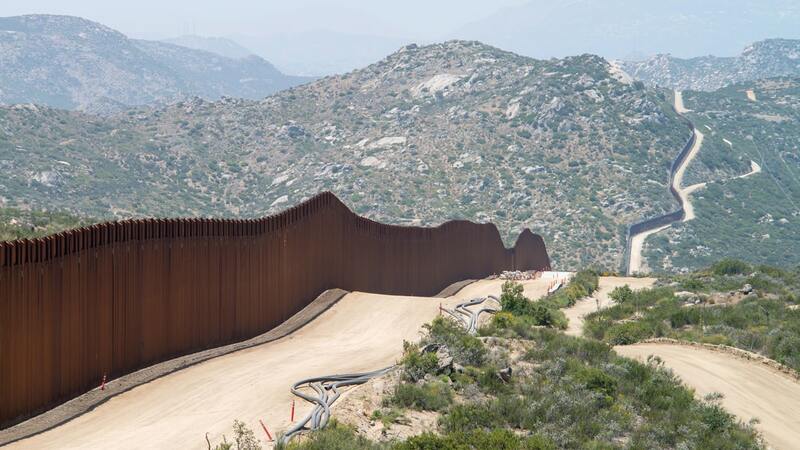
The journey across the Arizona border can be fraught with peril for migrants, exposing them to a multitude of vulnerabilities. Understanding their humanitarian needs is crucial for developing effective and compassionate responses. These needs extend far beyond simply providing food and water; they encompass physical, emotional, and psychological well-being.The challenges of providing essential services to migrants are significant.
Logistics, coordination, and resource allocation pose considerable hurdles, especially in remote areas. Maintaining the safety and security of vulnerable populations requires a well-organized and efficient system, encompassing not only basic necessities but also access to healthcare, legal aid, and psychosocial support.
Essential Services Required
Meeting the basic needs of migrants crossing the Arizona border is a complex undertaking. Essential services must be provided with sensitivity and respect for human dignity. The scale and nature of these needs can fluctuate based on seasonal patterns, environmental conditions, and the specific circumstances of the migrants.
The ongoing migrant crossings at the Arizona border are a complex issue, demanding careful consideration. While the situation there is undeniably challenging, it’s worth remembering the broader global context, like the recent Biden administration’s efforts to achieve a biden israel hamas cease fire. These international events, no matter how distant, can subtly shift the dynamics of the situation, impacting resource allocation and policy responses, ultimately affecting the Arizona border crossings.
We need to look at the full picture, even if it’s tough.
- Food and Water: Providing adequate, safe food and potable water is paramount. This involves establishing temporary feeding stations along potential crossing points and routes. Food should be culturally appropriate and nutritionally balanced. Water should be purified and readily accessible, especially during periods of extreme heat or drought. Examples include strategically placed hydration stations with shaded areas, along with easily accessible water distribution points.
- Medical Care: Access to prompt medical care is critical, as migrants may experience various health issues, including dehydration, injuries, and infectious diseases. Establishing temporary medical facilities near border crossings is essential. This should include trained medical personnel, basic medical supplies, and a system for transporting patients to hospitals when necessary. For instance, mobile medical units equipped with basic medical tools, along with a trained medical staff, can quickly reach individuals needing immediate medical attention.
- Shelter and Rest: Providing temporary shelter and rest areas is vital. These areas should offer protection from harsh weather conditions and ensure migrants can rest and recover before proceeding to their final destinations. These spaces should be secure, safe, and comfortable, with provisions for basic hygiene and sanitation.
- Legal and Psychosocial Support: Migrants may need assistance with legal procedures, such as immigration processes and accessing legal aid. Also, psychosocial support is critical, considering the emotional trauma and stress associated with migration. Trained personnel can provide counseling, information about available resources, and a supportive environment to address these issues. For instance, legal aid organizations can be strategically positioned to offer advice and guidance to migrants.
Role of NGOs
Non-governmental organizations (NGOs) play a vital role in providing humanitarian aid to migrants crossing the Arizona border. Their expertise, resources, and dedication often fill critical gaps in government services. NGOs can offer immediate support and long-term assistance, particularly in areas such as legal aid, psychosocial support, and logistical coordination.
- NGOs often have established networks and relationships with communities, enabling them to quickly assess needs and provide targeted assistance. For example, they can leverage existing partnerships with local organizations to ensure seamless aid delivery.
- NGOs can also play a critical role in advocacy, advocating for policies that support the rights and needs of migrants. They can work to raise awareness and challenge systemic issues that exacerbate the challenges faced by migrants.
- NGOs’ experience and resources allow them to provide specialized support. For example, NGOs can offer language support, cultural sensitivity training, and assistance in navigating complex bureaucratic processes.
Potential Risks to Health and Safety
Migrants face numerous potential risks during their journey across the Arizona border. These risks can affect their physical and mental health, leading to long-term consequences. Understanding and mitigating these risks is crucial for ensuring their safety and well-being.
- Dehydration and heat exhaustion, especially during hot months, are significant risks. Migrants may also be exposed to extreme weather conditions, such as storms and floods, which can pose additional dangers.
- Injuries from physical hazards along the border, such as rugged terrain or encounters with wildlife, are also a concern. Migrants may be vulnerable to attacks by criminal elements or other hazards.
- Exposure to infectious diseases is another potential risk. Lack of access to clean water and sanitation can increase the risk of waterborne illnesses. Furthermore, poor hygiene conditions can lead to the spread of contagious diseases.
Essential Services Breakdown
A structured approach to providing essential services is critical for efficiently assisting migrants. This table Artikels potential locations and responsibilities for various services.
| Service | Potential Locations | Responsibilities |
|---|---|---|
| Food and Water | Temporary feeding stations near border crossings, rest stops | NGOs, local governments, volunteers, coordinating agencies |
| Medical Care | Mobile medical units, designated temporary clinics | Medical personnel, NGOs, local hospitals, emergency services |
| Shelter and Rest | Designated rest areas, community centers, churches | NGOs, local organizations, volunteers, coordinating agencies |
| Legal and Psychosocial Support | Designated areas, NGOs’ offices, community centers | NGOs, legal aid organizations, social workers, mental health professionals |
Cross-Border Cooperation and Solutions
Addressing the complex issue of migrant crossings requires a multifaceted approach that transcends national borders. Effective solutions necessitate international cooperation, encompassing shared responsibility, coordinated strategies, and the exchange of best practices. This necessitates understanding the varying roles of different countries and international organizations in border management and identifying potential areas for future collaboration.International cooperation is crucial for managing the flow of migrants and asylum seekers.
Shared responsibility acknowledges that the challenges are not confined to a single nation but rather a collective issue that requires collective action. By working together, countries can create more humane and effective responses to migration, thereby mitigating potential conflicts and promoting peaceful coexistence.
The recent surge in migrant crossings along the Arizona border is a complex issue, demanding attention and thoughtful solutions. The tragic incident involving the armorer Alec Baldwin in the armorer Alec Baldwin Rust shooting sadly highlights the dangers of carelessness and negligence in certain industries, a parallel perhaps to the challenges of managing the border effectively. Ultimately, finding humane and sustainable solutions for these crossings remains a top priority.
Roles of Countries and International Organizations
Understanding the roles of different countries and international organizations in border management is essential for effective cross-border collaboration. This involves identifying their areas of expertise, capacity, and resources, as well as their respective mandates and obligations.
| Country/Entity | Role in Border Management |
|---|---|
| United States | Enforces immigration laws, manages border security, and provides support to asylum seekers. The US works with Mexico and other countries to establish cooperative agreements to address the root causes of migration, enhance information sharing, and facilitate repatriation efforts. |
| Mexico | Acts as a transit point for migrants, facing immense pressure from the volume of crossings. Mexico participates in joint patrols, information sharing, and agreements to address the safety and well-being of migrants and to secure its own borders. |
| Canada | Collaborates with the US on issues related to migration, particularly in areas such as information sharing and the management of asylum claims. Canada also works with international organizations on humanitarian assistance and support for refugees. |
| International Organization for Migration (IOM) | Provides humanitarian assistance and support to migrants and refugees. The IOM acts as a neutral facilitator in coordinating cross-border efforts, offering technical expertise and support for border management, and supporting asylum seekers and refugees. |
| United Nations High Commissioner for Refugees (UNHCR) | Provides international protection to refugees and works with countries to establish refugee status determination processes and assist with repatriation. The UNHCR also advocates for the rights and well-being of migrants and refugees. |
Examples of Successful Cross-Border Collaborations
Successful cross-border collaborations are crucial for developing effective strategies for migrant crossings. These collaborations have proven their ability to improve border management, mitigate humanitarian concerns, and establish more effective and sustainable solutions.
- Joint patrols and information sharing between border patrol agencies in the US and Mexico can help manage the volume of crossings and increase safety for both migrants and agents. This can lead to the identification of vulnerabilities and the implementation of strategies to prevent illegal activities.
- International agreements on asylum procedures and refugee status determination processes can reduce the burden on individual countries and provide a more coordinated approach to addressing the needs of asylum seekers. These agreements are designed to create a more predictable and fair process.
- Shared responsibility initiatives between countries can reduce the strain on individual nations, facilitating the establishment of a more sustainable and long-term solution. These initiatives involve countries taking on specific responsibilities to support migrants and refugees.
Potential Areas for Future Cooperation
Identifying potential areas for future cooperation is essential for developing more effective and comprehensive strategies. This requires anticipating future challenges and leveraging existing resources to develop innovative solutions.
- Improving data collection and analysis on migration patterns can help countries anticipate potential challenges and develop targeted strategies to mitigate potential crises. Data analysis can highlight emerging trends and risks, enabling more effective responses.
- Establishing regional migration platforms for collaboration and information sharing can facilitate a more comprehensive and coordinated response. These platforms will enable the exchange of best practices, strategies, and resources between countries.
- Developing standardized protocols for handling migrant crossings can ensure a more humane and efficient process. These protocols can include guidelines for documentation, procedures for identifying vulnerable individuals, and standards for providing support.
Illustrative Examples
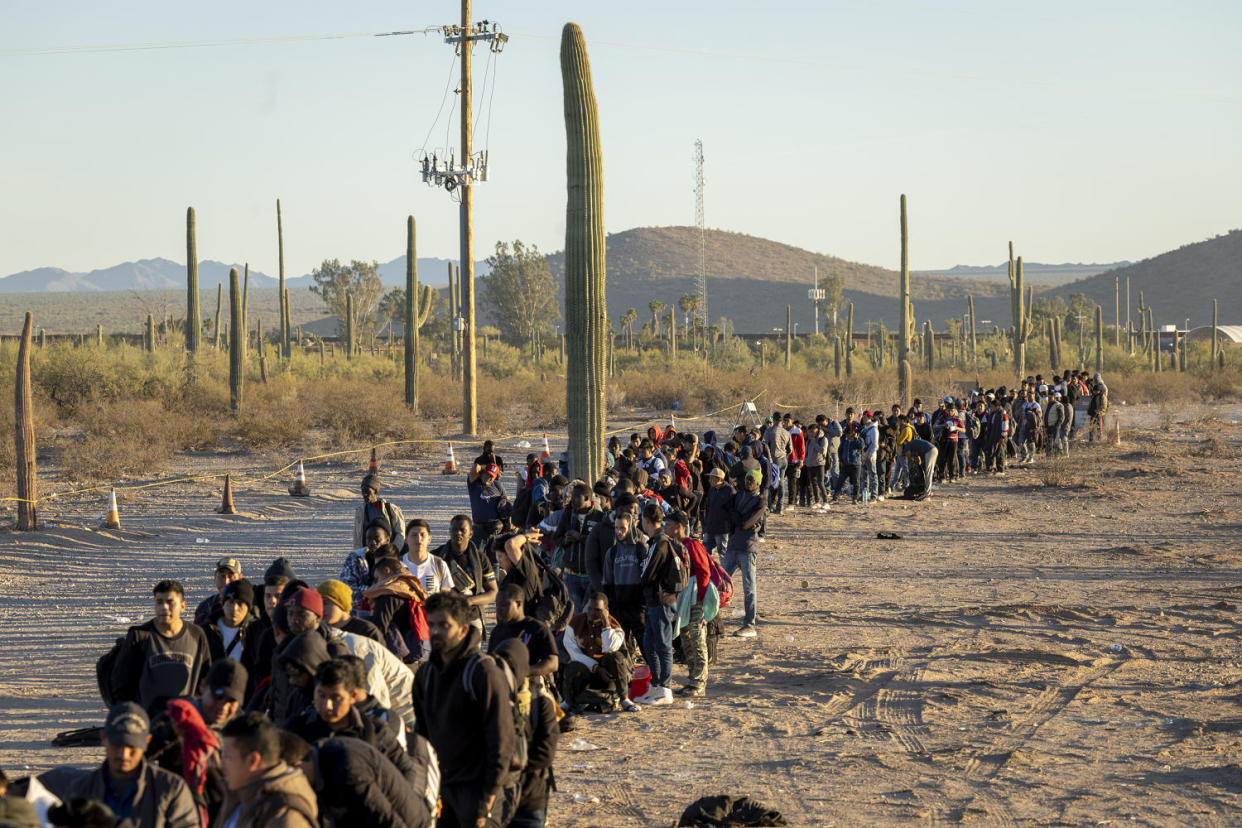
The human stories behind border crossings are often overlooked in the broader political and policy debates. Understanding the motivations, challenges, and circumstances faced by individual migrants provides a crucial lens through which to view the complexities of this issue. These narratives illustrate the diverse experiences and the often-unseen struggles of those seeking refuge or a better life.
Specific Cases of Migrant Crossings, Us border arizona migrant crossings
The Arizona border region witnesses a multitude of crossings, each with unique circumstances. A common thread is the arduous journey undertaken by migrants, often facing harsh environmental conditions, potential danger, and uncertainty about their future. These journeys are motivated by a wide range of factors, from seeking economic opportunities to escaping violence or persecution.
The recent surge in migrant crossings along the Arizona border is definitely a complex issue. It’s causing a lot of discussion, and the ripple effects are felt beyond the immediate area. The strain on resources is significant, and it’s interesting to see how this impacts the housing market near NYC. Housing market near nyc trends might be influenced by broader economic factors related to immigration patterns, which in turn affect the entire US economy.
Ultimately, the Arizona border situation will require a multifaceted approach for a lasting solution.
Individual Experiences and Motivations
A young Honduran woman, fleeing gang violence in her hometown, embarked on a perilous journey across the desert with her two young children. The scorching heat and lack of water presented significant challenges. Their motivation stemmed from a desperate need for safety and a chance at a better life. This story is just one example; many others involve similar motivations, such as seeking asylum, reunification with family members, or escaping extreme poverty.
Circumstances Leading to Crossings
In another instance, a family from El Salvador sought refuge from civil unrest and the threat of violence. Their decision to cross the border was deeply rooted in the fear for their safety and the desire to protect their children. The instability and uncertainty in their homeland drove them to undertake the dangerous journey. These circumstances often involve political instability, economic hardship, or social unrest, forcing individuals to seek alternative solutions.
Diversity of Experiences and Motivations
The experiences of migrants crossing the Arizona border are incredibly diverse. Some are seeking asylum, others are economic migrants, and still others are fleeing natural disasters. Their motivations range from escaping violence and persecution to pursuing educational opportunities or joining family members. This wide range of circumstances highlights the complex factors driving migration.
Illustrative Examples Table
| Motivation | Origin Country | Illustrative Case | Challenges Faced |
|---|---|---|---|
| Seeking Asylum | Venezuela | A family of four, fleeing political persecution and economic collapse. | Difficult desert crossing, uncertainty about asylum process. |
| Economic Migration | Mexico | A young man seeking work opportunities in the US to support his family back home. | Limited legal avenues, potential exploitation. |
| Family Reunification | Guatemala | A woman traveling to join her spouse who has already established residency in the US. | Navigating complex immigration processes, concerns about separation from children. |
| Fleeing Violence | Honduras | A single mother escaping gang violence and seeking safety for her children. | Extreme dangers during the journey, fear for her children’s future. |
Visual Representation of Data
Visual representations of data are crucial for understanding complex phenomena like migrant crossings along the Arizona border. Maps, graphs, and charts transform raw data into easily digestible information, revealing patterns, trends, and geographic distributions that might otherwise be obscured. This allows for a more comprehensive understanding of the issue and facilitates informed policy discussions and solutions.
Geographic Distribution of Crossings
The geographic distribution of migrant crossings along the Arizona border is a critical aspect of understanding the flow of individuals. Maps visualizing these crossings can highlight areas of concentrated activity, potentially revealing underlying factors like terrain, access points, or enforcement strategies. Understanding this distribution is vital for allocating resources effectively and targeting interventions where they are most needed.
- Arizona border sectors, such as the southern portion of the border, often show a concentration of crossings. This could be due to physical characteristics of the border or the presence of organized crime facilitating crossings in these areas. For example, in recent years, border patrol data has shown significant crossings in areas of the Arizona desert, often along areas with minimal physical barriers.
- Variations in crossing locations over time provide valuable insight into changes in smuggling routes or enforcement strategies. Historical data visualized in dynamic maps can show shifts in migrant traffic over months or years.
- Maps could also display the relative distance of crossing points from urban centers and population centers, indicating potential routes and motivations for migration.
Trends and Patterns in Crossing Data
Visual representations, such as line graphs and bar charts, can illustrate trends and patterns in migrant crossings over time. These visual tools can display fluctuations in the number of crossings, seasonal patterns, or the impact of policy changes.
The ongoing migrant crossings at the US border in Arizona are a complex issue, with many factors at play. While the situation is undeniably serious, it’s fascinating to consider how different art forms can sometimes offer a glimpse into the human condition, particularly when dealing with themes of desperation and resilience. For instance, the haunting melodies and dramatic performances on Broadway cast albums, like those for Sweeney Todd, broadway cast albums sweeney todd , can offer a unique perspective on the emotional toll of hardship.
Ultimately, the border crisis remains a significant challenge, demanding empathy and thoughtful solutions.
- Line graphs plotting the number of crossings per month or year can highlight seasonal fluctuations. For example, crossings might increase during warmer months due to easier travel in less inclement weather. They can also reveal the effect of policies or events that impact migration.
- Bar charts comparing the number of crossings in different sectors or border areas provide a visual comparison. They can show areas of higher or lower activity, helping to target resources effectively.
- Stacked bar charts could illustrate the nationalities of migrants crossing the border, highlighting potential shifts in migrant origin patterns over time.
Hypothetical Infographic
A hypothetical infographic summarizing border crossing data would use a combination of visual elements for clarity and impact. It would feature a detailed map of the Arizona border, highlighting areas of high crossing activity with varying shades of color. This map would be interactive, allowing users to zoom in on specific areas and reveal additional data points.
- A key feature would be a timeline displaying the number of crossings over the past decade, showing fluctuations in crossing activity over time. This timeline would be visually appealing, with clear markings for significant events or policy changes.
- A section featuring bar graphs could compare the number of crossings in different border sectors, offering a visual representation of the geographic distribution of crossings. This data could be further broken down by nationality, if available.
- Another section could provide data on the nationalities of migrants, visually represented through a pie chart or stacked bar graph. This would help to identify the origins of migrant populations crossing the border.
Conclusive Thoughts
In conclusion, the issue of US border Arizona migrant crossings is multifaceted and demanding a holistic approach. Understanding the historical context, current realities, and the human stories behind these crossings is crucial for developing effective and compassionate solutions. This exploration underscores the need for ongoing dialogue, cross-border cooperation, and a commitment to addressing the humanitarian needs of those seeking a better future.
Top FAQs
What are the most common motivations for migrants crossing the Arizona border?
Motivations range from seeking economic opportunities and escaping violence or persecution to reuniting with family. Individual circumstances vary greatly.
What are the major challenges faced by migrants during their journey?
Migrants often face dangers such as harsh weather conditions, dehydration, exhaustion, and potential encounters with criminal elements. The journey can be incredibly perilous.
What role do NGOs play in assisting migrants?
Many NGOs provide crucial support, including food, water, medical care, legal aid, and emotional support, playing a vital role in mitigating the hardships faced by migrants.
How have immigration policies changed over time, affecting crossings?
Immigration policies have evolved significantly, leading to shifts in migrant patterns and crossing strategies. These changes are often tied to political and economic shifts.

